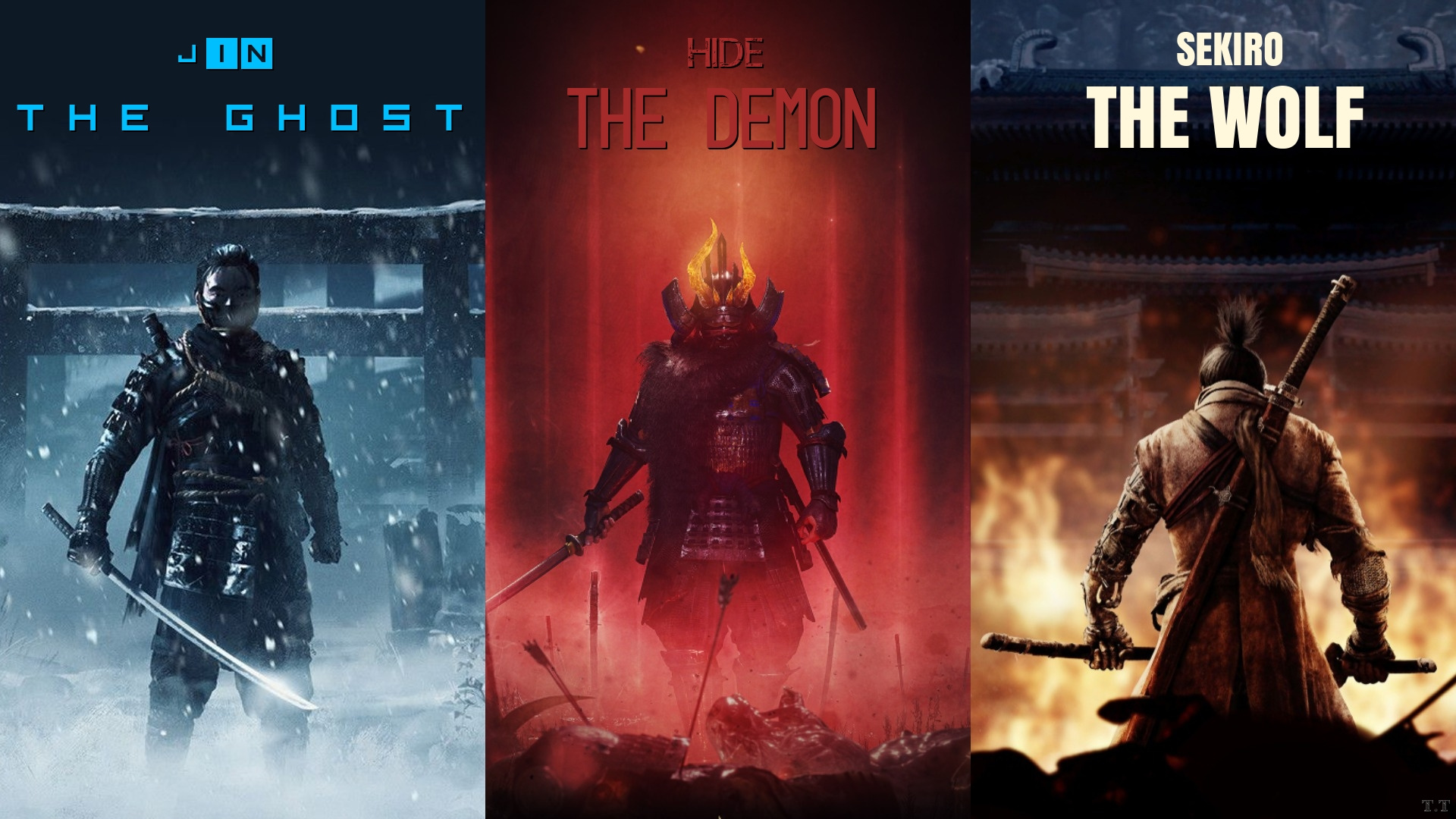Exploring the vast and immersive worlds of samurai-themed video games can be a thrilling adventure, especially when delving into the acclaimed titles such as “Ghost of Tsushima” and “Sekiro: Shadows Die Twice.” Each game offers a unique take on feudal Japan, with their own twists on combat, storytelling, and gameplay mechanics. Fans and newcomers to samurai lore alike may find themselves weighing which game to dive into first. Both games are excellent in their own right, but for different reasons. Here, we’ll compare these two epics, guiding you through the nuances and helping you decide which samurai path to walk.

Mastering Stances in Ghost of Tsushima
In “Ghost of Tsushima,” combat revolves around selecting the correct stance to defeat various enemy types. Understanding how to switch stances effectively is key to becoming a skilled samurai.
- Press the R2 button to change stances.
- Each face button corresponds to a different stance; tailor your choice to your opponent (e.g., Stone for swordsmen, Water for shielded foes).
- Use the indicated stance to exploit enemy weaknesses efficiently.
- Level up your character to unlock more stances and enhance your combat abilities.
By mastering stances, you can take on entire groups of enemies with grace and efficiency. While it adds depth to battles, it may take time for players to become comfortable with the system.
Stealth Tactics in Ghost of Tsushima
Stealth is a vital aspect of “Ghost of Tsushima,” where being unseen can turn the tides of conflict. Learning when and how to use stealth can save you from challenging confrontations.
- Use tall grass or buildings to hide from enemy sight.
- Distract enemies with thrown objects, allowing you to approach undetected.
- Employ stealth takedowns to eliminate foes quietly and without alerting others.
- Upgrade your stealth abilities through the skill tree to increase effectiveness.
Stealth in “Ghost of Tsushima” can make daunting tasks more manageable, but relies heavily on patience and timing. Overreliance on stealth can also diminish the samurai combat experience if used excessively.
Parrying and Deflecting in Sekiro
“Deflection” is central to Sekiro’s combat system, turning enemy attacks to your advantage. Timing is critical; successful deflections can break an opponent’s posture, leading to devastating counterattacks.
- Hit the block button just as an enemy attack lands to deflect.
- Practice with lower-tier enemies to get the timing down.
- Watch for enemy tells and audio cues that signal an incoming attack.
- Consistently deflecting attacks charges your posture meter, allowing for a “deathblow” finishing move.
Deflection adds a strategic layer to “Sekiro,” rewarding precise timing. However, it requires quick reflexes and can be difficult to master, potentially frustrating players not accustomed to such unforgiving mechanics.
Exploring Verticality in Sekiro
“Sekiro” stands out with its grappling hook mechanism, offering a vertical dimension to both exploration and combat. Incorporating vertical movements into your strategy can give an edge in battles and traversal.
- Look out for grappling points highlighted in the environment.
- Use the grappling hook to escape tight situations or to get a better vantage point.
- Combine grappling with stealth for aerial takedowns.
- Explore hidden areas and shortcuts through skillful use of the grappling hook.
Verticality introduces thrilling dynamics to “Sekiro,” though it might seem overwhelming at first. Players may need time to adjust to the freedom and pace of vertical exploration.
Crafting and Upgrading in Ghost of Tsushima
Crafting and upgrading gear in “Ghost of Tsushima” are essential for progressing your abilities and survivability in the game.
- Gather resources like wood, metal, and cloth throughout the game world.
- Visit blacksmiths and armorers in towns to upgrade weapons and armor.
- Choose upgrades that complement your playstyle, be it stealth or direct combat.
- Regularly check for new crafting options as the game progresses.
Upgrading gear ensures you remain formidable against stronger enemies. It could, however, be daunting for players who prefer a simpler, less resource-management-focused game experience.
Character Progression in Sekiro
Character progression in “Sekiro” is more about honing skills than amassing gear. Learning new techniques and improving attributes will shape your journey as the “one-armed wolf.”
- Defeat enemies and bosses to earn skill points.
- Spend skill points in the skill tree to learn new combat arts and passive abilities.
- Use prayer beads and memories from defeating bosses to increase your vitality and attack power.
Sekiro’s character progression is straightforward yet deeply rewarding. Those seeking traditional RPG level systems may find it lacking in customization options.
Collectibles and Side Quests in Ghost of Tsushima
Aside from the main storyline, “Ghost of Tsushima” is teeming with collectibles and side quests that enrich the game world.
- Explore the map thoroughly to uncover historical artifacts and treasures.
- Engage with NPCs to embark on side quests that offer stories and additional context to the game world.
- Participating in side activities rewards you with experience points and items that aid in your journey.
Engaging in collectibles and side quests adds considerable depth to the game, but some players may feel overwhelmed by the sheer amount available.
Posture System in Sekiro
Understanding and manipulating the posture system is essential for success in “Sekiro.” Breaking an enemy’s posture can leave them vulnerable to a finishing blow.
- Attack enemies consistently to build their posture meter.
- Balance your own posture recovery by managing the timing of your attacks and deflections.
- Use specific skills and prosthetic tools to target enemy posture.
The posture system demands continuous engagement in combat and strategic thinking. However, it’s complex and can be punishing until thoroughly understood and adeptly managed.
Ghost Weapons and Tools in Ghost of Tsushima
As Jin Sakai in “Ghost of Tsushima,” you will have access to various ghost weapons and tools that can turn the tide of battle.
- Unlock smoke bombs, kunai, and other tools by progressing the story.
- Use these tools creatively to distract, damage, or defeat your enemies.
- Experiment with different combinations of tools to find what works best for your playstyle.
While these weapons add great versatility to combat, relying too much on them can take away from the traditional samurai experience the game also offers.
Immersive World Interaction in Both Games
Both “Ghost of Tsushima” and “Sekiro” offer highly immersive worlds, but the way you interact with them differs.
- In “Ghost of Tsushima,” interaction is more about exploration and taking in the environment, with activities like composing haiku or following foxes to shrines.
- “Sekiro” focuses on dense, interconnected areas that require acute observation and memory to navigate effectively.
Though both games are immersive, “Ghost of Tsushima’s” open-world freedom contrasts with “Sekiro’s” more guided and challenging exploration.
In conclusion, “Ghost of Tsushima” and “Sekiro: Shadows Die Twice” each deliver exquisite samurai experiences but through diverging lenses. “Ghost of Tsushima” offers an expansive open world with varied combat and stealth, while “Sekiro” is more punishing with a focus on precision and skill. Both games require dedication to master and are deeply rewarding in their own respects.
FAQs
-
Do I need to be good at fast reflex games to enjoy “Sekiro”?
While “Sekiro” does require precise timing and quick reflexes, it is designed to encourage learning through failure, so even players not typically skilled in fast games can find enjoyment through perseverance and practice. -
Can I play “Ghost of Tsushima” solely as a stealth game?
Yes, “Ghost of Tsushima” offers robust stealth mechanics that allow you to play as a ghost, utilizing distractions, silent takedowns, and evasive techniques to avoid direct confrontations. -
Are there multiple endings to both games?
Yes, both “Ghost of Tsushima” and “Sekiro: Shadows Die Twice” feature multiple endings that are influenced by player decisions and actions throughout the game.









